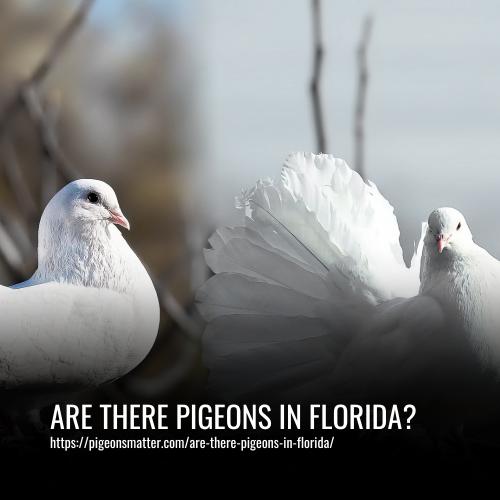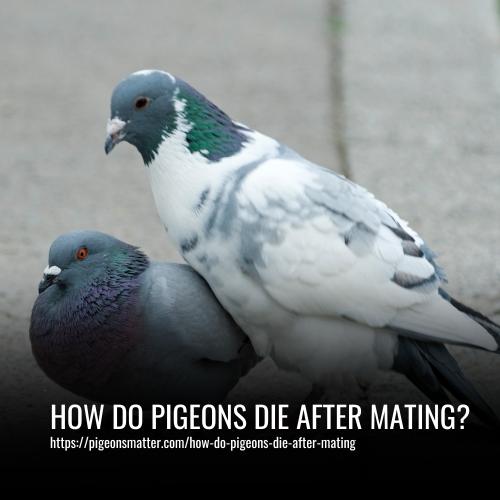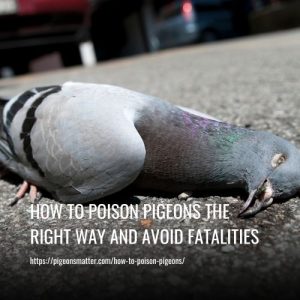Yes, there are pigeons in Florida. The state is home to a variety of pigeons, including the mourning dove, rock dove, and Florida sandhill crane.
The pigeon is found throughout Florida, congregating in urban, suburban, and rural agricultural areas. It is hard to know the range of the ancestral rock dove because feral pigeons are so widely distributed, but they are believed to naturally occur in southern Europe, the Middle East, and North Africa.

Where In Florida Are The Pigeons?
Pigeons can be found in many places across Florida. In urban areas, they are most commonly seen in cities like Miami, Tampa, and Orlando. Pigeons typically nest on ledges, in trees, or on the ground.
1. Urban Areas:
Pigeons are commonly seen in cities such as Miami, Tampa, and Orlando. They can be found nesting on buildings, bridges, and other structures in these urban environments.
2. Rural Areas:
Pigeons are also frequently spotted in rural areas, including the Everglades and Big Cypress National Preserve. They may nest in trees, on the ground, or in abandoned structures in these less densely populated regions.
3. Natural Areas:
In addition to urban and rural settings, pigeons can also be found in some of Florida’s natural areas. They are known to inhabit state parks and other protected areas where they may nest in the natural surroundings.
4. Wide Distribution:
Overall, pigeons are found in a variety of locations throughout Florida, from busy city streets to remote natural areas. Their adaptability and resourcefulness contribute to their ability to thrive in diverse environments across the state.
Types of Pigeons and Doves in Florida
Florida is home to a diverse range of pigeon species. These winged creatures can be found across the state, from the urban cityscapes to the rural countryside. Whether you’re a birdwatching enthusiast or simply curious about the different types of pigeons in Florida, here are some of the common species you might encounter.
1. Rock Dove or Rock Pigeon (Columba livia):
Rock Doves, or Rock Pigeons, are a common sight in urban areas where they often become a nuisance. To manage their presence, it’s important to discourage nesting by removing any potential nesting sites such as ledges and roof spaces. Additionally, reducing their access to food sources, such as spilled grain or bird feeders, can help control their population.
Rock Doves typically build their nests on ledges, under bridges, or in abandoned buildings. They feed on seeds, grains, and discarded food, and are known to cause damage by fouling buildings and monuments. In Florida, they are considered a non-native, invasive species and are not protected by state or federal laws. As such, it is legal to control their population using methods such as trapping or bird spikes to prevent them from roosting or nesting.
Effective control methods include the use of physical barriers, like netting or wire mesh, to prevent access to roosting and nesting sites. Additionally, devices that emit ultrasonic or other deterrent sounds can be used to discourage them from certain areas. It’s important to address any food sources and nesting sites to effectively manage their presence.
2. White-Crowned Pigeon (Patagioenas leucocephala):
The White-Crowned Pigeon is found in the Caribbean region, including countries such as Cuba, Jamaica, Bahamas, and Puerto Rico. Its habitat includes tropical and subtropical forests, mangroves, and coastal areas with dense vegetation. The population of the White-Crowned Pigeon is declining due to habitat loss, hunting, and the impact of climate change.
This species is listed as Near Threatened on the IUCN Red List, with conservation efforts focused on protecting its habitats and regulating hunting activities. The dietary needs of the White-Crowned Pigeon include a variety of fruits, seeds, and small insects. Factors contributing to its declining population trend include deforestation, overhunting, and the loss of food sources.
The call of the White-Crowned Pigeon is a distinctive “coooooo” sound, and its flight patterns are characterized by fast and direct flights with strong wing beats. Conservation efforts are crucial to ensure the survival of this species in the wild, especially in its range countries where its populations are most threatened.
3. Mourning Dove (Zenaida macroura):
The Mourning Dove is a medium-sized bird with a plump body, gray-brown feathers with black spots, a long pointed tail, and a small head. They are approximately 9-13 inches in length with a wingspan of 17-18 inches. Their habitat includes open forests, urban, and suburban areas in North and Central America. They can often be found in fields, parks, and gardens.
Mourning Doves primarily feed on seeds, particularly those of grasses and weeds, as well as occasionally snails and insects. They are known to forage on the ground in small flocks, using their keen eyesight to locate food.
The population of Mourning Doves has been decreasing in recent years, largely due to lead poisoning from the ingestion of lead shot and contaminated water. Despite having a large population, they are still at risk due to this threat. Efforts have been made to ban lead shot and promote lead-free ammunition to reduce the risk to these birds.
4. White-Winged Dove (Zenaida asiatica):
The White-Winged Dove is a medium-sized bird with a long, tapered tail and distinctive white wing patches that are visible in flight. It is native to the Southwestern United States, Mexico, and Central America, and is known for its distinctive cooing call. This species prefers open woodlands, scrublands, and urban areas with access to water and can often be found nesting in mesquite, acacia, and thorn scrub habitats.
The population trend of the White-Winged Dove has been relatively stable, although it has faced some local declines due to habitat loss, hunting, and trapping. The biggest threat to this species is the loss of its natural habitat and nesting sites. In some areas, the presence of invasive species and the use of pesticides have also hurt their population.
Feeding Habits of These Species in Florida
Florida is home to a diverse range of species, each with its unique feeding habits. From the birdlife that graces the wetlands to the marine life that inhabits the coastal waters, the feeding habits of these species vary greatly.
Understanding how these creatures obtain their food not only provides insight into their behaviors but also underscores the delicate balance of ecosystems in Florida. Let’s take a closer look at the feeding habits of some of the fascinating species that call Florida home.
Sunflower Seeds as a Common Food Source for All Four Species:
Sunflower seeds are a common food source for various bird species, including pigeons, cardinals, finches, and chickadees. They are prevalent and desirable due to their high energy and nutrient content, making them an important source of food for these birds, especially during the winter months when other food sources may be scarce.
For pigeons, sunflower seeds are a particularly valuable food source due to their high fat and protein content. These seeds provide essential nutrients that help pigeons maintain their energy levels and overall health, especially in urban areas where food may be limited. In agricultural areas, sunflower seeds can also attract pigeons and other bird species, which can have both positive and negative impacts on crops. While they can help control insect populations, they may also damage crops if their numbers become too large.
FAQ
There is no accurate estimate of how many pigeons are in Florida, as the bird is not native to the state and its population is not tracked by wildlife officials. However, it is safe to say that there are at least a few thousand pigeons in Florida, as the bird is commonly seen in urban areas and is a popular pet.
The most likely explanation is that somebody released them intentionally. In the wild, pigeons typically mate for life and live in flocks of up to 40 birds. They typically eat grains, seeds, and insects. Florida’s mild climate and ample food sources make it a ideal habitat for pigeons.
Yes, pigeons are prevalent across Florida. They are a common sight in urban areas, parks, and near buildings, thriving in the state’s warm climate.
Various pigeon species inhabit Florida, including the Rock Pigeon (Columba livia), Eurasian Collared-Dove (Streptopelia decaocto), and White-crowned Pigeon (Patagioenas leucocephala), among others.
Pigeons can create problems in urban environments due to their droppings, which may deface buildings and structures. Additionally, their nesting habits can lead to issues with sanitation and potential health concerns.
Pigeons tend to gather in areas with abundant food sources, such as city squares, parks, rooftops, and areas near restaurants or food establishments.
Local regulations and ordinances in various cities and counties across Florida may address pigeon control measures. These could include restrictions on feeding wildlife or implementing deterrents to manage pigeon populations.
To deter pigeons, various methods can be employed, including installing physical barriers, using decoys or predator models, employing sound deterrents, and ensuring there are no easily accessible food sources that attract them.
Conclusion
Whether you love them or find them a nuisance, there’s no denying that pigeons have made their presence known in Florida. From city streets to coastal areas, these birds have adapted to their surroundings and become a part of the diverse wildlife in the state.
So next time you spot a pigeon in Florida, take a moment to appreciate their resilience and ability to thrive in unexpected places.


